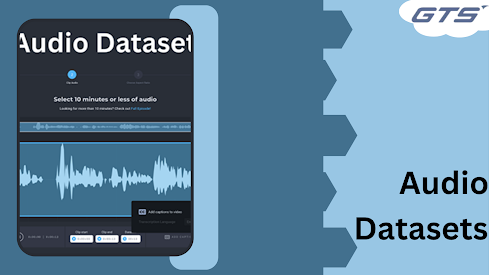The Sound of Data: Unlocking Insights with Audio Datasets
Introduction:
The Sound of Data: Unlocking Insights with Audio Datasets is a rapidly growing field in data science that involves analyzing audio signals and extracting valuable information from them. This emerging field is fueled by the increasing availability of audio data, along with advances in machine learning algorithms and signal processing techniques.
Audio data can be found in a wide range of applications, including speech recognition, music analysis, environmental monitoring, and even healthcare. By analyzing patterns and structures in audio data, researchers and data scientists can gain insights into various phenomena, such as human behavior, emotion, and disease diagnosis.
The Sound of Data is a powerful tool for unlocking new insights that may not be easily accessible through traditional data analysis techniques. As this field continues to grow, it has the potential to revolutionize the way we approach data analysis, providing new opportunities for businesses, researchers, and individuals to gain valuable insights from the sounds around us.
how to Unlocking Insights with Audio Datasets
Unlocking insights with audio datasets requires a combination of techniques and tools from different fields, including signal processing, machine learning, and data analysis. Here are some general steps you can follow to start exploring and extracting insights from audio data:
- Define your research question: Before you start working with audio data, you need to have a clear research question or objective. This will help guide your data collection, processing, and analysis.
- Collect and preprocess the data: Depending on your research question, you may need to collect audio data from different sources, such as recordings of human speech, animal sounds, or environmental noise. Once you have the data, you need to preprocess it to remove noise, normalize the volume, and extract relevant features. There are many open-source libraries and tools available for audio processing, such as Librosa, TensorFlow Audio, and PyAudio.
- Analyze the data: Once you have preprocessed the data, you can start analyzing it using various techniques such as clustering, classification, and regression. For example, you could use clustering to group similar sounds together or use classification to identify the language spoken in an audio recording.
- Visualize and interpret the results: After you have analyzed the data, it’s important to visualize and interpret the results to gain insights. You can use tools such as matplotlib, seaborn, and plotly to create visualizations that help you understand the patterns and trends in the data.
- Iterate and refine: As with any data analysis project, it’s important to iterate and refine your approach based on the insights you gain from the data. You may need to collect more data, try different preprocessing techniques, or adjust your analysis methods to get more accurate or useful results.
Overall, unlocking insights with audio datasets requires a combination of technical skills, creativity, and domain expertise. By following these steps and leveraging the right tools and techniques, you can extract valuable insights from audio data that can inform decision-making in fields such as speech recognition, music analysis, and environmental monitoring.
What is the dataset for voice recognition?

There are many datasets that can be used for Speech recognition dataset, but some of the most commonly used ones include:
- Common Voice: This is a dataset created by Mozilla that contains recordings of people reading sentences in different languages. It is an open-source dataset that is available for anyone to use.
- Google Speech Commands: This dataset contains over 100,000 audio files of people speaking short phrases like “yes”, “no”, and “stop”. It is commonly used for keyword spotting and command recognition.
- VoxCeleb: This dataset contains over a million recordings of celebrities speaking in various languages. It is commonly used for speaker recognition and verification.
- LibriSpeech: This dataset contains over 1,000 hours of audio recordings of people reading books aloud. It is commonly used for speech-to-text transcription.
- TIMIT: This dataset contains recordings of people speaking phonetically balanced sentences. It is commonly used for acoustic-phonetic studies and speech recognition research.
These datasets are just a few examples of the many resources available for voice recognition research and development.
conclusion:
Global Technology Solutions is a AI based Data Collection and Data Annotation Company understands the need of having high-quality, precise datasets to train, test, and validate your models. As a result, we deliver 100% accurate and quality tested datasets. Image datasets, Speech datasets, Text datasets, ADAS annotation and Video datasets are among the datasets we offer. We offer services in over 200 languages.


.png)
.png)
Comments
Post a Comment